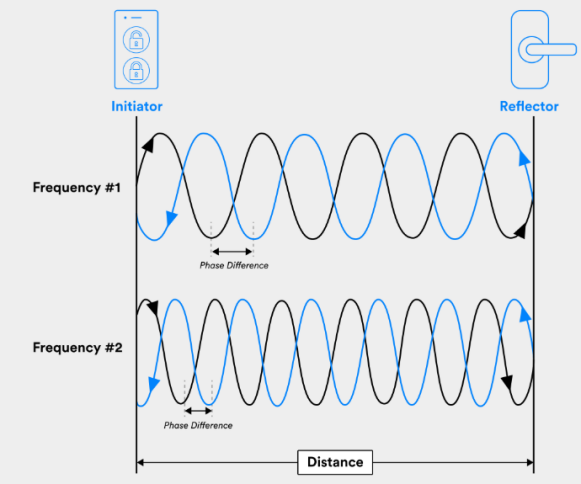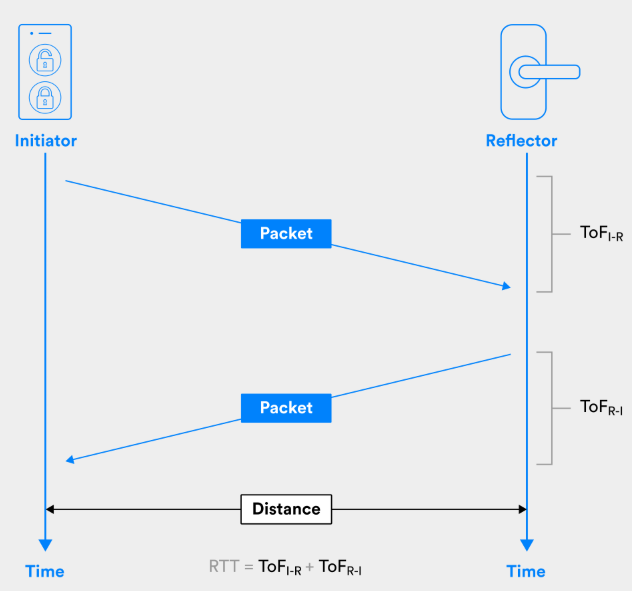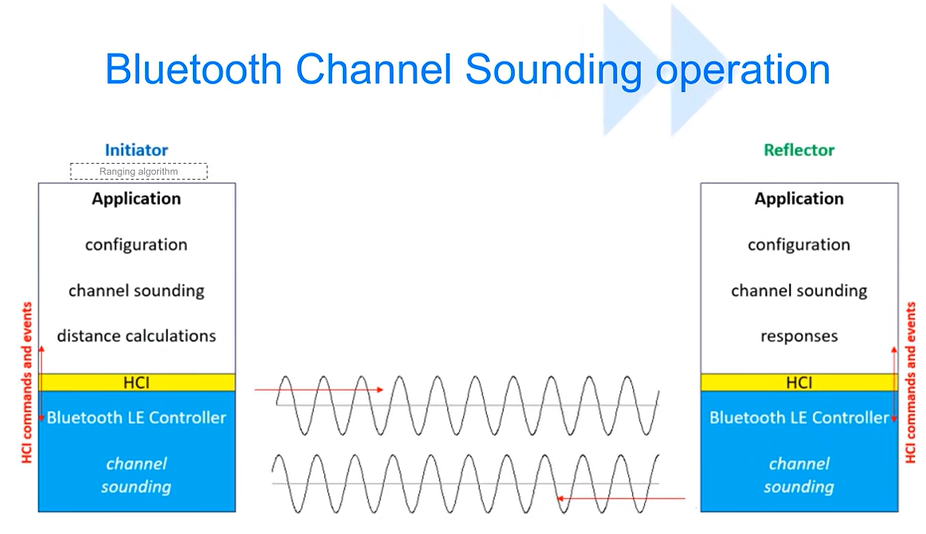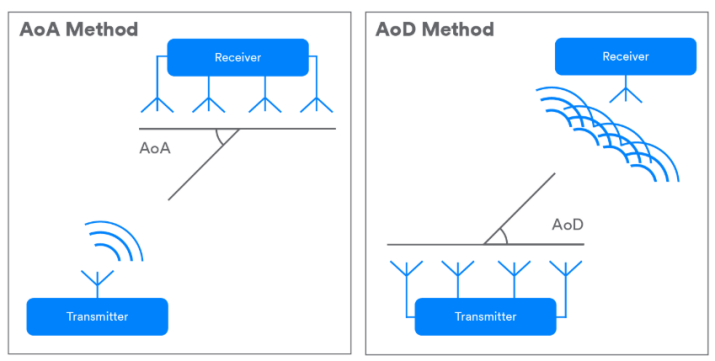How does Bluetooth 6.0 achieve centimeter-level positioning
Bluetooth 6.0 is the latest core specification launched by the Bluetooth SIG, and Bluetooth channel sounding is the most important innovative function in the specification, which can be widely used in application scenarios such as indoor positioning, distance detection and proximity sensing. Bluetooth channel sounding is designed to improve the accuracy and security of Bluetooth device ranging. Unlike the traditional received signal strength indication (RSSI) method of coarse ranging, Bluetooth channel sounding is a more precise ranging function.

Bluetooth 6.0, how to achieve "centimeter-level" distance perception capability?
The Bluetooth SIG said that the Bluetooth channel sounding function mainly uses two proven ranging methods, namely phase-based ranging (PBR) and round-trip time (RTT), to achieve safe and precise ranging between Bluetooth-connected devices.
Bluetooth channel sounding uses phase-based ranging (PBR) to achieve accurate distance measurement between two devices. In PBR, the initiator device sends a signal to the reflector device, and the reflector device returns the signal. This process is repeated in multiple frequencies. The distance between devices is calculated based on the phase difference between the transmitted and received signals on these frequencies.

Image source: Bluetooth SIG
Phase-based ranging (PBR) for high-precision distance measurement
Bluetooth channel sounding also uses an auxiliary ranging method called round-trip time (RTT) as a countermeasure against sophisticated man-in-the-middle (MITM) relay attacks. In RTT, the initiator device sends a cryptographically scrambled data packet to the reflector device, which returns the packet. The distance between devices is then calculated based on the time it takes for the packet to travel back and forth.

Image source: Bluetooth SIG
Round-trip time (RTT) for secure distance bounding
RTT, as a secure distance bounding technology, provides an independent distance measurement to cross-check the PBR measurement, which can significantly reduce the risk of MITM attacks.

Image source: Bluetooth SIG
Bluetooth channel sounding application and Bluetooth protocol stack
In summary, by combining PBR and RTT, the Bluetooth channel sounding function enables secure and accurate ranging between Bluetooth devices. During channel detection, the initiator sends a carrier signal or data packet through a designated 2.4 GHz channel, and the reflector responds by sending data back to the initiator. The round-trip time of the data packet and the phase difference between the transmitted and received carrier signals can be used to determine the distance.
The Bluetooth SIG said that from the test results, the Bluetooth channel detection function can achieve a measurement distance of 100 meters, and the accuracy error can be within ±50 cm; when the distance is less than 5 meters, the accuracy error can even be close to 10 cm.

It can be expected that with this "centimeter-level" distance perception capability, the Bluetooth channel detection function will bring many interactive innovative applications to industries such as industry, home and retail. For example: keyless entry for cars and houses and security strategies based on geo-fences, when users approach, the door is opened for users with correct authorization; if users stay in sensitive areas for too long, an alarm will be issued. Bluetooth mice, keyboards and game controllers can automatically switch between active and inactive states based on their distance from smartphones, tablets or laptops.
Bluetooth 6.0, how to achieve "centimeter-level" positioning capabilities?
Positioning technology has a wide range of applications, such as GPS, which is widely used around the world. However, GPS does not work well in indoor environments, so there is a need for a practical indoor positioning technology that can use a tracking system to track the specific location or direction of the target object, or let the device track the location of the target object in the indoor environment by itself.
The Bluetooth channel detection function can now achieve "centimeter-level" positioning indoors by working with the direction finding functions (angle of arrival (AoA), angle of departure (AoD)) supported by Bluetooth 5.1. It allows two devices within each other's wireless coverage to determine the distance between them in a safe and accurate manner, which greatly enhances the location services and positioning functions that already exist in low-power Bluetooth.
In the angle of arrival (AoA) method, multiple receivers are arranged in an array, and the radio waves emitted by a single transmitter will arrive at different receiver antennas at different phases. By collecting the phase difference of the signals received from different antennas, the direction of the radio wave can be calculated. Because the incident angle of the radio wave is determined relative to the receiver, this technology is called angle of arrival (AoA).

Image source: Bluetooth SIG
Direction finding using AoA and AoD
In the Angle of Departure (AoD) method, multiple transmitters are arrayed and transmit radio waves with the same initial phase, while a single receiver can measure the phase difference of different incident waves to calculate the direction of the radio waves. Since the incident angle of the radio wave is determined relative to the transmitter, this technology is called the Angle of Departure (AoD).

It can be expected that with this "centimeter-level" positioning capability and the huge Bluetooth ecosystem, the Bluetooth channel detection function will be widely used in indoor environments. In the fields of object management, object tracking and pet tracking. For example: when small devices such as remote controls, keys, headphones, etc. in the home are lost, their location can be quickly located through mobile phones and other devices using the Bluetooth 6.0 channel detection function.
At this stage, Bluetooth technology has become an integral part of people's lives. Billions of Bluetooth devices are running in the vast field of the Internet of Things every day, and the emergence of the Bluetooth channel detection function can bring these Bluetooth devices "centimeter-level" distance perception and positioning capabilities. In the future, Bluetooth devices will not only be able to detect each other's relative positions more accurately and securely, creating more possibilities for developers and users, but will also be expected to push Bluetooth technology into a new era of application and unleash more potential in the Internet of Things.
